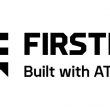FirstNet adopted by more than 9,800 agencies, supporting almost 900,000 connections, AT&T says
More than 9,800 agencies have subscribed to FirstNet and connected almost 900,000 devices to the nationwide public-safety broadband network (NPSBN), according to figures recently released by AT&T, which was selected to build and maintain the NPSBN in March 2017.
AT&T released the FirstNet adoption figures as part of its investor briefing that was included in the company’s package reporting third-quarter earnings. AT&T officials did not mention the FirstNet adoption update during the conference call with analysts last week regarding the company’s financial performance during the third quarter.
In August, AT&T announced that almost 9,000 public-safety agencies had made more than 750,000 broadband connections through the FirstNet program. The FirstNet subscription figures released last week represent about a 10% increase in the number of subscribing agencies since August, and at least a 15% increase in broadband connections during the same three-month period.
The investor briefing does not provide any details about the adoption figures, including whether the agencies are “primary”—i.e., fire, EMS, law-enforcement, 911 or emergency-management entities—or “extended primary” groups like general government, utilities, transportation and healthcare organizations. It also does not cite whether the additions are existing AT&T customers migrating to FirstNet or customers that are entirely new to AT&T, although company officials previously have indicated that most FirstNet additions this year have been in the latter category.
AT&T did not update its progress deploying cell sites that support LTE operations on the 700 MHz Band 14 spectrum licensed to the FirstNet Authority.
AT&T executives have stated repeatedly that the planned FirstNet buildout on this spectrum would be at least 70% complete by the end of the year. In August, Chris Sambar—then AT&T’s senior vice president for the FirstNet program—said this buildout effort was more than 65% done at that point, after reaching the 60% mark as of the end of June.
“We’re now at over 65%,” Sambar said in August during an interview with IWCE’s Urgent Communications. “I can’t talk prospectively, but we did 5% in a month, so you can probably guess that things are going well.”
In September, Sambar was promoted within AT&T’s corporate structure and Jason Porter was appointed as head of AT&T’s FirstNet unit.
AT&T reached the 60% buildout threshold nine months ahead of the schedule in its contract with the FirstNet Authority. The next major threshold for AT&T is to reach 80% completion of the network buildout, which is the primary requirement that the carrier giant must achieve to qualify for a payment of more than $1 billion from the FirstNet Authority.
Under the FirstNet Authority contract, AT&T gains access to the 20 MHz of Band 14 spectrum licensed to the FirstNet Authority and has the potential to receive $6.5 billion by executing all network-deployment milestones in a timely manner. In return, AT&T must make payments to the FirstNet Authority that total more than $18 billion during the 25-year contract period. This money is expected to pay the FirstNet Authority’s operating costs during the time of the contract and fund about $15 billion in technological updates to the broadband system.














